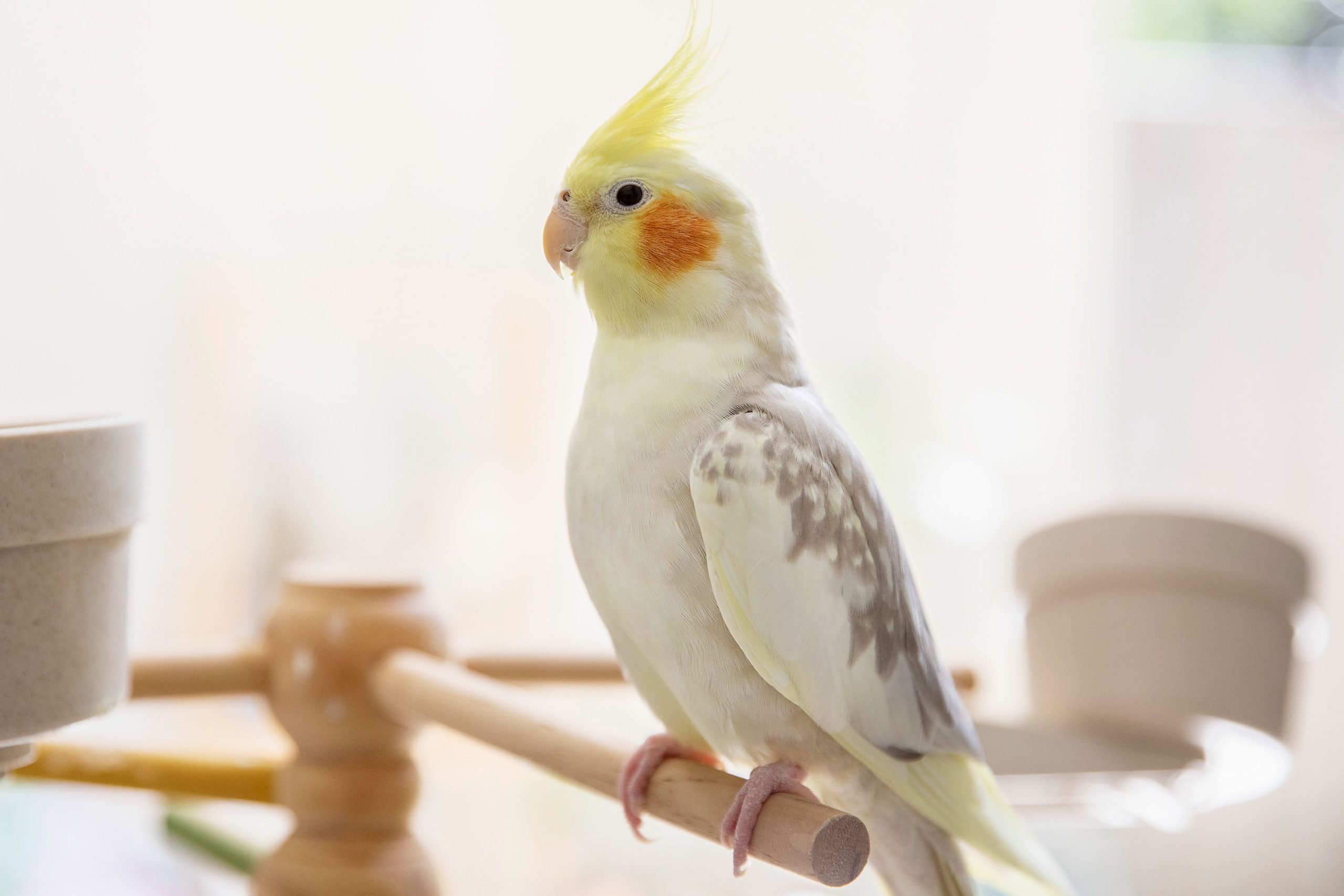priceless-stories.org – Cockatiels (Nymphicus hollandicus) are small parrots native to Australia. Their distinctive crest, gentle personalities, and ability to mimic sounds and even human speech have made them one of the most popular pet birds worldwide. From their wild origins in the Australian outback to their presence in homes around the globe, cockatiels continue to charm and delight bird enthusiasts.
Physical Characteristics: Crests, Colors, and Cheek Patches
Cockatiels possess several distinctive physical features:
- Crest: Their most prominent feature is their erectile crest on top of their head, which they raise or lower to express different moods.
- Size: They are relatively small parrots, typically measuring around 30-33 cm (12-13 inches) in length, including their long tail.
- Coloration: Wild cockatiels are predominantly grey with white patches on their wings and yellow faces and crests. Males have brighter yellow faces than females. Domesticated cockatiels come in a wide array of colors and mutations, including lutino (yellow), pearl (patterned feathers), pied (patches of different colors), and cinnamon (brownish-grey).
- Orange Cheek Patches: They have distinctive orange cheek patches, which are more prominent in males.
- Zygodactyl Feet: Like all parrots, they have zygodactyl feet (two toes pointing forward and two pointing backward), which aids in gripping branches and other surfaces.
Classification and Origins: Native to Australia
Cockatiels are the only member of the genus Nymphicus within the cockatoo family Cacatuidae. Their wild ancestors are native to the arid and semi-arid regions of Australia, inhabiting open woodlands, scrublands, and grasslands.
Habitats and Distribution: From Outback Flocks to Domestic Cages
Wild cockatiels are nomadic, following food and water sources across the Australian outback. They form large flocks, especially during non-breeding season. Domesticated cockatiels are found worldwide as pets.
Diet and Foraging: Primarily Seed Eaters
In the wild, cockatiels primarily feed on:
- Seeds: Grass seeds and seeds from other native plants are their main food source.
- Vegetation: They may also consume small amounts of vegetation, fruits, and insects.
Domesticated cockatiels thrive on a balanced diet consisting of:
- Pellets: Pelleted diets are often recommended as they provide a more complete and balanced nutrition than seed mixes alone.
- Seed Mixes: A high-quality seed mix formulated for cockatiels can be offered in moderation.
- Fresh Fruits and Vegetables: Offer a variety of fresh fruits and vegetables daily to provide essential vitamins and minerals.
Behavior: Social, Vocal, and Affectionate
Cockatiels are highly social and intelligent birds, known for their gentle and affectionate personalities.
- Vocalization: They are vocal birds, producing a variety of calls, whistles, and chirps. They are also capable of mimicking sounds and even human speech, although not as proficiently as some larger parrots.
- Social Interactions: They thrive on interaction with their human companions and can form strong bonds.
- Playfulness: They enjoy playing with toys, chewing on objects, and exploring their environment.
- Dust Bathing: They regularly take dust baths to maintain their plumage.
Reproduction: Breeding in Captivity
Cockatiels can breed readily in captivity with proper conditions:
- Breeding Season: Breeding season is typically triggered by longer daylight hours and abundant food.
- Nesting: They require a nest box or other suitable nesting site.
- Eggs: The female lays several white eggs.
- Incubation: Both parents share incubation duties, which lasts approximately 18-21 days.
- Chick Rearing: Both parents participate in feeding and caring for the chicks.
Mutations and Varieties: A Spectrum of Colors and Patterns
Selective breeding has resulted in a wide variety of cockatiel mutations and varieties, including:
- Lutino: Yellow with red eyes.
- Pearl: Patterned feathers with light edges.
- Pied: Patches of different colors.
- Cinnamon: Brownish-grey.
- Whiteface: Lacking yellow or orange facial coloration.
- Pastel Face: Diluted yellow or orange facial coloration.
Care and Keeping: Creating a Comfortable Environment
Keeping cockatiels as pets requires providing for their specific needs:
- Cage: A spacious cage is essential to allow for flight and exercise.
- Diet: A balanced diet of pellets, seeds, and fresh foods.
- Water: Fresh, clean water available at all times.
- Enrichment: Toys, perches of varying diameters, and opportunities for foraging and social interaction are crucial for their mental and physical well-being.
- Social Interaction: Cockatiels thrive on interaction with their human companions.
- Veterinary Care: Regular checkups with an avian veterinarian are important for maintaining their health.
Conclusion: Gentle Companions with Distinctive Crests
Cockatiels are beloved companions, known for their gentle personalities, charming crests, and ability to mimic sounds. Their relatively easy care and affectionate nature make them a popular choice for bird lovers of all ages. Providing them with proper care, enrichment, and social interaction ensures their well-being and allows us to fully appreciate these delightful birds from the Australian outback.
